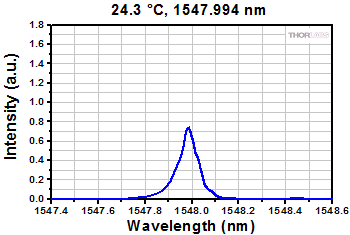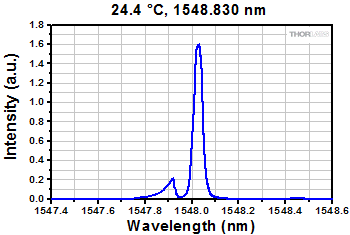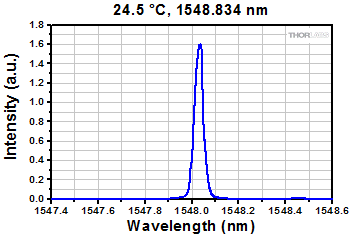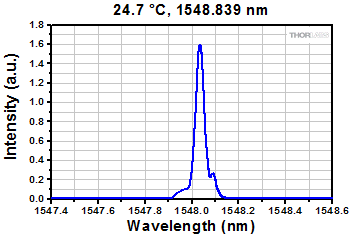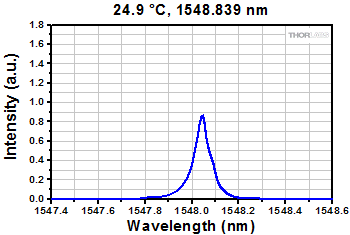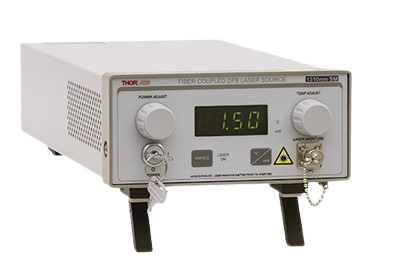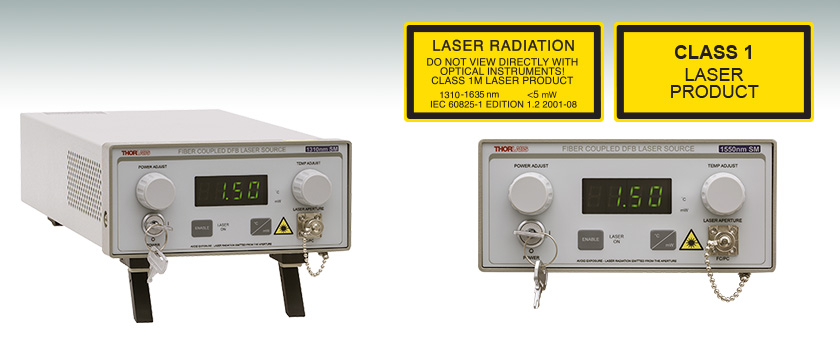Also found on the front panel is a display that shows the output power in mW or the temperature in °C, an on/off key, an enable button, and the FC/PC bulkhead connector (wide and narrow key compatible). The back panel includes an input that allows the laser diode drive current to be controlled via an external voltage source and a remote interlock input.
Features
- Available Wavelengths: 1310 nm and 1550 nm
- Single Mode, FC/PC Fiber Interface
- Narrow Spectral Linewidths: Typically <0.06 nm
- Thermoelectric Cooler (TEC) for Temperature Stabilization to within 0.005 °C
- Built-in 40 dB Optical Isolator
- Adjustable Temperature Setpoint
- Power Level is Adjustable via Knob and BNC Modulation Input
- Interlock Circuit Provided via 2.5 mm Mono Jack
Please refer to the table to the right for all of our single channel benchtop laser sources.
| Single Channel Benchtop Laser Sources Selection Guide | |||||
| Spectrum | Wavelength | TEC | Laser Type | Cavity Type | Output Fiber Type |
| Visible | 405 - 675 nm | No | Semiconductor | Fabry Perot | SM, MM, or PM |
| 405 - 685 nm | Yes | Semiconductor | Fabry Perot | SM | |
| NIR | 785 - 1550 nm | No | Semiconductor | Fabry Perot | SM or PM |
| 705 - 2000 nm | Yes | Semiconductor | Fabry Perot | SM | |
| 1310 - 1550 nm | Yes | Semiconductor | DFB | SM | |
| 1900 - 2000 nm | N/A | Fiber Laser | Fabry Perot | SM | |
| MIR | 2.7 µm | N/A | Fiber Laser | Fabry Perot | SM |
| Other Fiber-Coupled Laser Sources | |||||
BNC Female
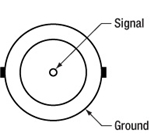
0 to 5 V Max, 50 Ω
Remote Interlock Input
2.5 mm Mono Phono Jack

Terminals must be shorted either by included plug or user device, i.e. external switch, for laser mode "ON" to be enabled.
These benchtop laser sources provide the ability to control not only the output power of the fiber coupled laser diode, but also allows for the precise control of the temperature at which the laser is operating. These two controls can be used to tune the fiber coupled laser diode to an optimum operating point, providing as stable an output as possible. The following graphs are from an OSA monitoring the output of a typical S3FC1550 laser.
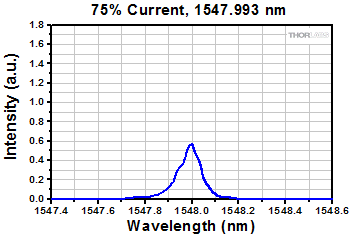
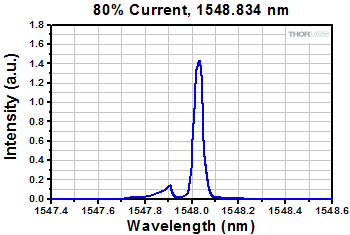
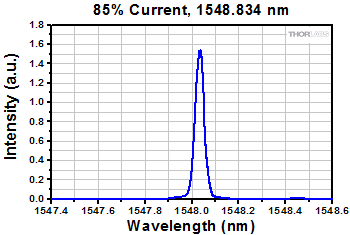
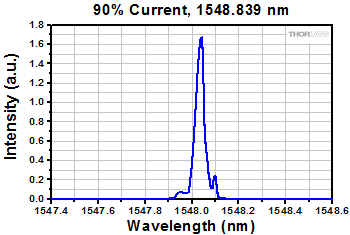
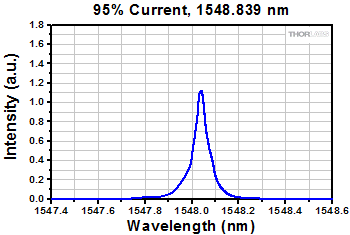
The plots below show the relationship of temperature verse stability. With the drive current fixed at 85% of maximum, the operating temperature was increased by 0.1°C per plot, starting at 24.3 °C. In the first plot, the laser appears stable but it can be improved. As the temperature is increased to 24.4 °C the laser enters a transition point between modes. At this temperature, the laser may mode hop resulting in erratic output. At 24.5 °C the laser has reached a stable operating point, indicated by the single narrow line width. The last two plots (24.7 °C and 24.9 °C) show the laser passing through the optimum point and decreasing in stability and desired output.
